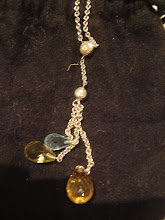
In 1936, my grandfather bought the first family car from Alfred Chaston’s in Blackwood. New cars were great novelties and it was assumed that you wouldn’t know how to drive. So they chucked in a set of lessons with the car.
Grandpa was 57 years old and had no intention of learning to drive. Too old, by far: my age now!. My father, aged 19, was to be the family driver.
Driving had become a dangerous pastime. In 1934, 7,343 people were killed on Britain’s roads. There were only 2.4 million vehicles on the road, 1.5 million of which were cars. The driving test was introduced in 1935. Initially, the test was voluntary. Another world, eh?

The second edition of the Highway Code had just been published. It was 24 pages long and there were only 10 road signs to learn. It cost 1d. No, I don’t mean 1p, I mean 1d, there were 12 in a shilling and 240 in a £. It still included advice to drivers of horse drawn vehicles to ‘rotate the whip above the head; then incline the whip to the right or left to show the direction in which the turn is to be made.’
After his eight lessons, Dad was test-ready. The examiner met him at Chaston’s, Dad handed over his 7/6d (37.5 p) and off they went. The test involved:
• Eyesight - he could see the birds on the trees on the other side of the valley.
• Highway Code Questions – with only 10 road signs, that was easy too
• Emergency stop – the examiner banged the dashboard with his clipboard and you stood on the brake. The little car halted eventually. You prayed that there was no-one under the car, or even worse, behind …
• Hand / arm signals – rigid (right turn), rotating (left turn), and slowly up and down (slowing down)
• Reverse left – round a corner watching out for the person you nearly got in the emergency stop
• Turn in the road – not as easy as it sounds. No power steering and if you stalled, you had to get out and start it with a starting handle.
• General driving – this was all over in thirty minutes and, anyway, he could turn the car on a sixpence.
Nearly done … except. Applying for your licence, you had to state whether you had any disabilities. When he was three years old, he had been seriously ill and this left him profoundly deaf. No hearing aids gave him anything approaching normal hearing.
 The examiner hopped out of the car and produced one of these. Standing in front of the car he squeezed the bulb end and then jumped back in. Fresh-faced and eager, Dad turned to him. The examiner hollered “Did you hear that?” “Yes!” he replied enthusiastically. He never worked out whether the air horn had indeed made a noise.
The examiner hopped out of the car and produced one of these. Standing in front of the car he squeezed the bulb end and then jumped back in. Fresh-faced and eager, Dad turned to him. The examiner hollered “Did you hear that?” “Yes!” he replied enthusiastically. He never worked out whether the air horn had indeed made a noise. Tick.
Passed.
He drove every day for the rest of his life, more or less. My mother never failed to remind him that she had learned to drive before him (1933). And he never failed to remind her that, unlike her, he had taken and passed his driving test.
So,























